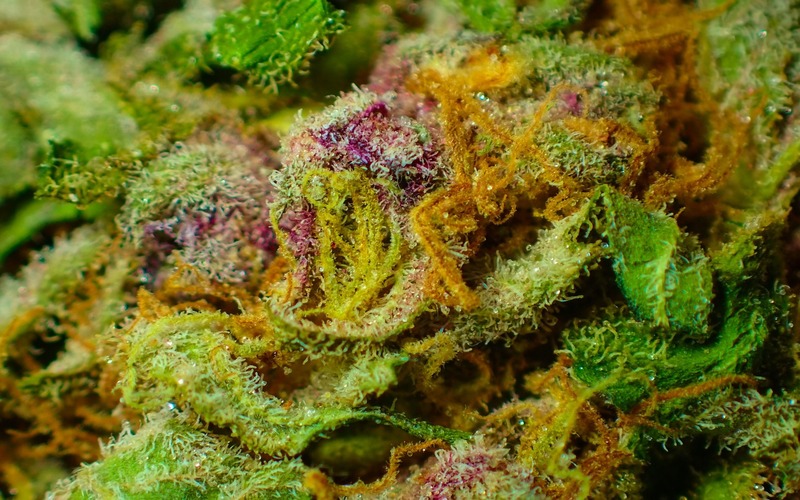Cannabis is brimming with fragrant, colorful, and therapeutic compounds ripe for exploration and extraction. Yet, innovators have barely scratched the surface in developing products that utilize the plant’s complete spectrum profile.
While consumers are aware of major cannabinoids and terpenes, the industry hasn’t introduced therapeutic flavonoids in a meaningful way quite yet.
However, the cannabis industry is always searching for new innovations, and flavonoids have the potential to be just that. Not to mention, they smell and taste great, too.
Flavonoids are exciting, not only for their unique wellness properties but also for their capacity to introduce a vast array of new products that have yet to be seen in this ever-evolving industry.
What Are flavonoids?
Flavonoids are not exclusive to hemp and cannabis. You can find 8,000 varieties of flavonoids in almost every plant species, including vegetables, fruits, and herbs, as well as products such as wines and chocolate.
Flavonoids provide pigment, flavor, and environmental protection for plants, preventing damage from environmental stressors like bacteria, fungi, insects, and the sun’s UV rays. Studies have also shown that flavonoids are highly therapeutic to humans.
These tiny compounds are making a big splash in the cannabis industry. According to Market Reports World, the flavonoids market will reach $1.2 billion by 2024, bolstered by the increased interest from brands and innovators.
However, there’s still a significant gap between industry interest and consumer education. The general public is largely unaware of flavonoids, despite news of their remarkable therapeutic properties beginning to circulate in the mainstream.
Researchers are finding that flavonoids provide an array of benefits beyond functioning as antioxidants and anxiolytics (anti-anxiety).
A study published in the American College of Nutrition found that 500mg of the botanical flavonoid Quercetin taken each day over eight weeks helped reduce stiffness and pain for women with rheumatoid arthritis.
Researchers from Harvard Medical School found that Caflanone, a flavonoid extracted from a rare cannabis strain in Jamaica, may potentially be a therapeutic drug against COVID-19. Caflanone recently received the “Orphan Drug” designation from the United States Food and Drug Administration (FDA).
A review of Kaempferol found that it controls and modifies critical processes, including apoptosis (cell death), inflammation, and metastasis (cancer spread).
A 2020 review of existing literature concluded that botanical flavonoids, including Apigenin, block the synthesis of inflammatory mediators.
Flavonoids and the Healing Potential of Full Spectrum
Despite the troves of flavonoids research, the cannabis industry hasn’t focused on testing for these compounds or on developing flavonoid-based products.
Innovators need to start investing in understanding how flavonoids occur, how to extract them, and how they may play a role in the entourage effect — a process by which cannabinoids, terpenes, flavonoids, and other compounds interact with the body’s endocannabinoid system (ECS).
Once they do, brands can produce strains with profiles to tailor the consumer experience. They can also infuse strains with botanical flavonoids or create custom flavonoid extracts.
Tailoring an individual’s cannabis experience depends on understanding how the cannabis compounds work together to create its therapeutic, flavor, and fragrance profiles.
Like cannabinoids and terpenes, flavonoids act as anti-inflammatories, antioxidants, and antibacterials. These factors make their presence fundamental to maximizing the therapeutic powers of the full spectrum from controlling pain to producing mood-altering, uplifting results.
Why Brands Should Look Beyond Cannabinoids and Terpenes
It’s time for the industry to look beyond cannabinoids and terpenes alone and begin proactively testing products for flavonoids while utilizing the vast scientific information available to create tailored products.
We must continue learning about these compounds based on evidence, not anecdotal information. Pharmacokinetics — the study of drug movement through the body — and studies on bioavailability — the extent a substance becomes available in the body — are integral to understanding how flavonoids function.
As an industry, we must prioritize testing for these compounds as the first step in formulating effective compounds for developing new products. Those who take advantage of these extraordinary compounds will surely capitalize on the market’s growth.
Innovative Niche Product Potential
It’s clear that ingestible products are today’s most significant growth sector in the cannabis industry — exemplified by cannabis beverages’ rise in popularity.
Developing flavonoid extracts, for example, is an effective strategy for entering a new segment of the market that acts as both an ancillary and distinct product.
Since flavonoids provide flavor, fragrance, and pigments, botanical extracts open the door for experimentation. Combining cannabinoids, terpenes, and flavonoids can create delicious, endocannabinoid-activating experiences.
Thanks to the public’s growing interest, hybrid plant wellness products are also rising. Botanical/CBD blends are on the market in several forms, including teas, tinctures, and capsules.
Some brands are combining the medicinal properties of CBD, CBG, CBN and terpenes with the healing powers of mushrooms and cordyceps.
Flavonoids are a dynamic botanical to add to the cannabis repertoire. And since they represent popular flavors and aromas including chamomile, ginger, and berry, there are many ways brands can add them to edibles, beverages, tinctures and more.
There is a clear path to entering this niche: more frequent and improved testing can help close the information gap on flavonoids by providing easy-to-understand Certificate of Analyses (COAs) illustrating the product’s specific compound profiles.
As this information becomes readily available and better understood, brands, consumers, and budtenders can access it and seek out blends and products that meet their specific needs.
The Future of Flavonoids
At ACS Laboratory, we trust that more brands will begin regularly testing for flavonoids.
Additionally, we need to investigate how to best extract flavonoids from cannabis/hemp to begin flavonoid-based product innovation.
By committing to testing and research initiatives, brands can learn more about the compounds present in their products, and consumers will have the tools to make informed decisions on their paths to personalized usage.
We are excited to continue exploring the vast potential of cannabis and hemp.
Innovation is key to creating comprehensive options that elevate cannabis’ full spectrum potential and research studies are the keys to proving efficacy.
This article was first published in the winter 2021 issue of Cannabis & Tech Today. Read the full issue here for free.






